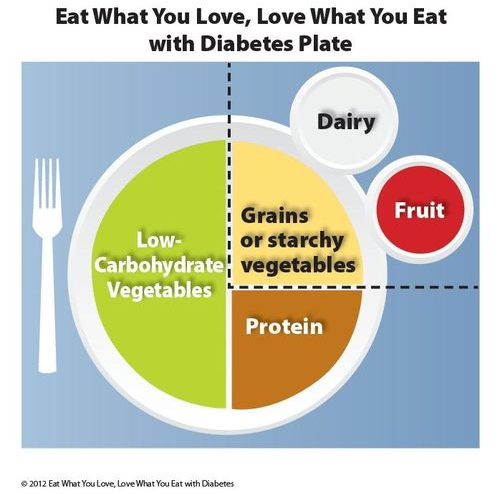
When you are diagnosed with diabetes you most likely advised to avoid sweets and carbohydrates, but putting this advice into action can be confusing. Controlling your blood glucose levels can be achieved in different ways but following a healthy, carbohydrate-controlled meal plan is the first defense.
Nutrition is an important part of a healthy lifestyle, especially when you have diabetes. Along with other benefits, following a healthy meal plan can help you keep your blood glucose level in your target range. There is no one-size-fits-all diet. You will need to make some changes in what and how much you eat, but you have flexibility in deciding what’s on the menu. The good news is that you can still enjoy some of your favorite foods, but in smaller portions and less often.
Diabetes: Types, Symptoms, Prevention & Treatment Risk Factors and Complications
Blood Glucose Management
What exactly does “healthy eating” mean? You should:
- Concentrate your diet on vegetables, whole grains, fruits, non-fat dairy foods, healthy fats, and lean meats or meat substitutes
- Don’t overeat or eat too much of one type of food
- Space out your meals evenly throughout the day
- Don’t skip meals
- Drink water instead of sweetened beverages
Foods and drinks you should limit include:
- Fried foods and other foods high in saturated fat and trans fat
- Foods high in salt
- Sweets, such as baked goods, candy, and ice cream
- Beverages with added sugars, such as juice, regular soda, and regular sports or energy drinks
- Alcoholic beverages
Meal Planning
Meal planning is a simple act of deciding what food to eat: carbohydrates, lean proteins and healthy fats. Because foods that contain carbohydrates raise blood glucose levels higher and faster than other types of food, it is important to balance your meals and snacks for optimal glucose control. Counting carbohydrates is a good solution for many people living with diabetes.
Your body needs carbohydrates — starches, sugars and fiber — every day, but you need to monitor the type and amount of carbohydrates you eat at each meal and snack.
Starches are found in grain foods, some vegetables and beans. Grain foods include bread, cereal, rice and pasta. Starchy vegetables include corn, green peas, potatoes, lima beans and winter squash. Beans like pinto, garbanzo, kidney and lentils also contain starch.
Sugar can be added or found naturally in food. Added sugar is usually found in most desserts, candy, regular soft drinks and processed foods. Naturally occurring sugar can be found in milk (lactose) and fruit (fructose). Sugar is listed on the nutrition facts label of packaged foods. To determine if the sugar is “added” check the ingredient list on the product.
Fiber has the least effect on glucose levels and is beneficial in a healthy meal plan. Fiber is found in whole grains, vegetables, fruits, beans and some nuts. Because most fibers are not digested, they do not raise blood glucose.
Meal Planning Guides
Additional meal planning guides are coming soon.
Carbohydrate Counting: 3 Beginning Steps to Control
 Step 1: Develop a meal plan.
Step 1: Develop a meal plan.
Typical carbohydrate-controlled meal plans allot 45-60 grams of carbohydrate per meal (as shown in plate method below) and 15-30 grams of carbohydrate per snack.
Step 2: Be aware of foods that contain carbohydrates.
You can learn about the carbohydrates in your foods by utilizing a food choice list, a reputable website or phone app; reading the nutrition facts label on packaged foods; or checking with a reference book.
Step 3: Understand that the portion size of food makes a difference.
Limiting portions can help control the total carbohydrate grams contained in meals and snacks. Measure food servings so you will know how many grams of carbohydrate you are consuming. Each serving of starch, fruit and milk are approximately 15 grams. (A serving of milk is approximately 12 grams of carbohydrates per 8 oz., rounded up to simplify carb counting.)
Before you start any new treatment or meal plan, consult with your physician and certified diabetes educator. Since specific nutrition needs vary, (based on weight, height, age, physical activity, medications, other medical conditions and personal preferences) consulting with your diabetes education team can be beneficial in controlling blood glucose, weight and other laboratory values.
The information presented on this page is educational and not intended as medical advice or the practice of medicine. Specific aspects of your outcomes and care should be addressed and answered after consultation with your physician.